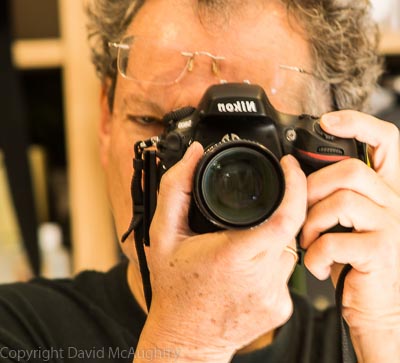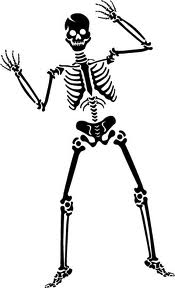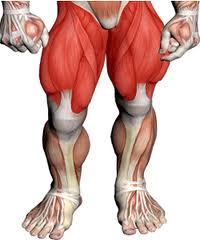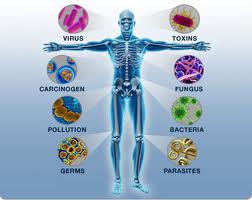Systems check for runners
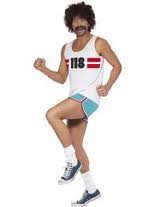 In a recent post I wrote about the little reward of a decent lunch after a good run. I was musing after this post about what makes a run good, or even great. In my case, I don’t get the endorphin rush from running that some people apparently do. I feel good after a 5k, and fine after a 10k, but not exactly orgasmic, or anything close to that. Just as well probably. What makes a run good for me is the feeling of power in reserve, of not being knackered at the end, and whether I am firing properly on each of the key running systems that I think are core to the process. What are these systems I hear you ask, as you politely turn away, cover your mouth, and yawn. I’ll outline them below since you asked, and then briefly describe what they are and how I keep them nicely lubed.
In a recent post I wrote about the little reward of a decent lunch after a good run. I was musing after this post about what makes a run good, or even great. In my case, I don’t get the endorphin rush from running that some people apparently do. I feel good after a 5k, and fine after a 10k, but not exactly orgasmic, or anything close to that. Just as well probably. What makes a run good for me is the feeling of power in reserve, of not being knackered at the end, and whether I am firing properly on each of the key running systems that I think are core to the process. What are these systems I hear you ask, as you politely turn away, cover your mouth, and yawn. I’ll outline them below since you asked, and then briefly describe what they are and how I keep them nicely lubed.
- Skeletal System
- Muscular System
- Aerobic System
- Immune System
Any one of these can go sproing independently of any of the others and cause problems either during and after the run. So I personally take steps as far as I can to ensure they all work. Now a bit more detail on that….
Obviously bones and such. This is the runner’s main problem, but at least pro tempore not one that troubles me today, although it’s been a big problem in the past. I know people who have had to stop running because of back or knee problems, and other people who say as a mantra, that running is dangerous because it causes back or knee problems. While these latter are often people who could not actually run even if they didn’t believe that, there is truth in the assertion. And legions have been written about it. I don’t get problems myself I think because of the three key preventative steps I take.
Alignment: Many people just walk and run funny. Walking funny is usually not a problem, but in particular running with your knee and ankle out of vertical alignment can cause huge increases in the stress on knees and back, as I found about a year after I started running seriously. The answer for me, was a custom-made pair of orthotic insoles and carefully-chosen running shoes. There are orthotic charlatans about as I found to my physical and financial cost, but a good place to start is via a Google search of recommendations from running clubs in your area. I also go to a top-flight chiropractor, and get my back put back into alignment about 2-3 times a year. I’m happy btw to give the names of my personal chaps for each of these treatments in response to direct emails to me.
Lubrication: Yes I did mean getting lubed. In this case, it’s a couple of supplements I take. I take a good dose of Omega 3 DHA plus glucosamine sulphate every day. Fish oil capsules of good quality are widely recognized as being good for heart and brain function. The key ingredient, DHA is also responsible for cell regrowth. Most fish oil capsules contain around 100 mg of DHA. I take 2 of Boots highest strength capsules, which each contain 230mg, giving around 450mg DHA (and 700mg of the also useful EPA) in total. With that I take the recommended dose of 1500mg of Glucosamine Sulphate. With these two, I ended the aches and pains that an aging old f*rt tends to get in a wet and cold climate like England’s.
Running style: This is not for everyone, but I read and was attracted by the message in Christopher McDougall’s book Born to Run. While his emphasis is on barefoot running, which is an unattractive option for many reasons, not all dog-sh*t related, he also talks a lot about running style. He asserts man was designed to run long distances, and this predated Nike shoes by tens of thousands of years. Before cushioned running shoes were devised, there were thin shoes or no shoes, and the technique used was not to land on the heel, as you tend to do in cushioned running shoes, but to land on the ball of the foot, using the handy feature of the ankle to absorb the shock. There is now reasonable data to support the contention that frontfoot runners suffer about half the injuries of rear foot runners. I have been running in this style for about a year now, and had a chance to test it on my recent trip to Cape Town. In the complexity of packing for the Otter Trail, I forgot my orthotic inserts. That worryingly then gave me 5 weeks of running with possibly the wrong ankle geometry, which I felt certain would lead to a knee or back problem. But actually, running deliberately frontfoot on the balls of my feet up and down quite steep hills has resulted after 4 weeks in no problems at all. And it has given me a nicely turned calf, which I feel is much admired when I coyly choose to display it.
I combine this style with the Alexander Technique, well known for musicians and actors, but less so for runners. This approach does much of what I outlined before, but also focuses on lengthening the spine upwards as you run, with your head leading the way. The running style is also lighter and more flowing. The essence of the Alexander method is that you think about your back lengthening, rather than physically try to stretch it – amazingly, it works very well (for me).
Needless to say this is a lot to think about, and I am not suggesting that you change your own style. But there is no doubt in my mind that these methods produce a much easier, more enjoyable run, so it’s worth practicing a bit.
Some people are natural runners, and some are not. I used to be quite fast and fluid in my teens, but then I stopped running for 30 years or so, and when I restarted, I was profoundly no longer natural. I think easy runners have two key benefits: firstly very highly defined slow and fast-twitch muscle fibres (slow-twitch are used for long-distance running or lifting weights, fast for sprinting and other quick movements), and secondly a good power to weight ratio. I’m pretty tall, with quite big bones. I also find it difficult to build muscle mass whatever the twitching speed. So my power-to-weight ratio is poor, and in years of running it hasn’t improved much.
Now one definition of a good run is that I don’t feel fatigued. Tired possibly, but not fatigued. Running up (and in fact down) hills can be pretty fatiguing though. I have developed a method for both this and walking up very steep hills on Himalayan and other treks. This is based on the fact that the biggest muscle in the body by far is the Gluteous Maximus (or backside). The muscles most commonly used for running uphill however are the thigh, or quadricep muscles, along with the calves and hamstrings. Because these are smaller they get fatigued faster, and on a long run, that is hard to recover from. So I focus on using my glutes more when running. I call it the Khyber method (based on cockney rhyming slang – Khyber pass = *rse. Helpfully this works with both English english and US english accents). Doing this results in way less fatigue, and the ability to chug up hills at a steady rate, pretty well indefinitely. My uphill running style now resembles a startled faun at the road level, due to my forefoot striking method, and a rhinoceros at the *rse level due to my implementation of the Khyber method. I have seen it gain many admiring glances as I trundle, perspiring, past.
This is probably the most important of all the systems, but with the fewest clever dodges to fix it. In addition to feeling fatigued, a bad run for me is when any part of it leaves me out of breath. Clearly running is an aerobic activity, and requires more oxygen, but when you start uncontrolled panting, you have lost control of the situation (in running as in so many other areas of life). So I breathe ahead of the hill – as I see a steeper section coming, I’ll increase the frequency and depth of my breathing, so that when I get past it, I can return pretty instantly to relaxed breathing.
I don’t use a fancy method of breathing. In out, in out etc etc is my basic approach, with as far as possible one leg alternately in front of the other. Greco-Roman, in essence, though without the oiling.
The other thing about aerobic capacity is you ‘use it or lose it’. You start to lose aerobic capacity after 2-3 weeks of inactivity, and for health it needs topping up at least every other day. By contrast muscle strength takes about 6 weeks to start degrading, and only needs a once or twice per week workout to keep topped up. So for the aerobic system to work, you need to keep running or cycling or any activity that causes you to breathe faster.
How can you assess your aerobic levels? It tuns out that with a top end heart rate monitor, you can determine your aerobic capacity, known as VO2max. The real test is arduous as it involves running at your maximum level while breathing into an oxymeter (see photo above). With an HRM you just lie down and it does a fair approximation. The last time I did it I found I have the aerobic capacity of a fit 25 year old woman. One day I hope to meet her.
This is not as obvious as the other three systems, but just as important I feel. It’s an odd thing, but being super fit does not always equate to being super healthy. There are many people who are very healthy but only exercise mildly. Conversely elite athletes are very often susceptible to flu, colds, and other easily caught ailments. This is because the body takes such a hammering at that level that the immune system is occupied repairing physical damage, and the barriers are lowered to simple ailments.
In my own experience, I found that when I was traveling intensively (I commuted to New York every week for 10 years), if I exercised intensively the day before flying, I usually got a cold from the plane flight. Similarly, if I did a long run the day after flying, I usually would sproing something. This seems to apply to any kind of long journey by the way – even to the 10 hour drive to our French place. So separating travel and intensive exercise by at least a day is a fundamental rule for me. Having said that, the only reason I was able to sustain such a long period of traveling, was because I did exercise, but sensibly, and well away from flying dates. By the way, for the same reason, if I am running a longish distance (upward of 10k say), I try to avoid places afterwards where I would come into contact with people with colds and running the risk of contacting flying snot in the air.
Are there ways to boost or help the immune system? After longer runs, I take 1-2gm of vitamin C and an Echinacea tablet, to boost the immune system. But as I have recently discovered, Vitamin D also has a very profound effect on the immune system as in many other areas. What I was formerly attributing to the warmth of Cape Town, I think is actually due to the effect of direct sunlight in making Vitamin D. The expert on this is Michael Holick, and I really recommend his book, or this super-cheap Kindle short (which gives a lot of info for 99c). From this I learned that direct sunlight exposure to your body in the hours around mid-day, for a short period is by far the safest and easiest way to improve your vitamin D levels. Prior to this I had like most people, covered myself up, and used sun-block. But a Vitamin D test I had done on myself, last year, at the end of 6 weeks in sunny Cape Town showed a level of 22 ng/mL, only just above the deficiency level, and well below the healthy level (a good result is above 30 – more like 50). And I spent most of my time outdoors, running, walking or loafing!
My strategy now is to wear no sunblock when I run, and when I get back to spend an additional 15 minutes getting sunlight on my chest. Afterwards it’s back to normal with sunblock etc, but I now am careful to get my dose of direct sunlight. In the UK of course it will be a different story. I’ll be taking around 1500 units a day of Vitamin D as a supplement when I come back. I’ll get tested again at the end of this year, and will report results in this blog. I know you’ll be gagging for the answer.
Finally, a funny effect which I noticed last year in Cape Town, and experienced again this year. It’s probably not to do with the immune system, but I’ll park it here anyway. I mentioned in an earlier post that because probably of the sun and the above effects, I can run longer and more frequently here than I can in the UK. Because of that, for the last month or so, I’ve been doing a tough 10k every other day. But there is a subtle effect. Although all the 4 systems are working fine – no injuries, colds, fatigue, out of breathiness etc, there is one small but important lingering effect. It is that I feel less cheerful in the late afternoon and evening when doing this. I used to put it down to being a miserable b*stard. But while that is true, I am more of one when running regularly running long, than when I am not. I think it is down to a long-term, sub-level fatigue. I feel the same way on the occasional periods I am ill or am suffering some pain. It’s hard to muster the energy to be pleasant or cheerful while that other stuff is going on. That’s why people in long-term pain are often grumpy.
In general I would rather be cheerful than feel virtuous (story of my life really). So I have in the last week or so, I have moved to a 5k for two successive days, then a day break, then repeat. This has me much more equanimous, if not yet fully at the agreeable level.
Conclusion
So there you have it. These concepts have flittered around my mind while running, and I thought I would document them for my own, and possibly your benefit. There turned out to be much more content than I expected, but you turn out to have read it anyway. It only remains for me to drop dead while running in the next 2 weeks. If I can live through that, then these notes may possibly have some lasting value.
